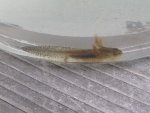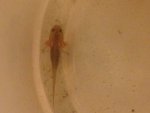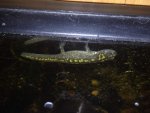rachel1
Member
- Joined
- Oct 30, 2012
- Messages
- 465
- Reaction score
- 33
- Points
- 18
- Country
- United States
I found a whole bunch of larvae in a muddy puddle while on vacation in midcoast Maine. Hoping for help with identification. They are very small, about 1" long with fully developed front legs with 4 toes and back limb buds. Olive brownish color with black speckling down the tail. Any ideas? I don't know the native species very well. They were in a silty ditch by the side of the road with some leaf litter, probably 150 of them. Here's a pic. Thanks!




